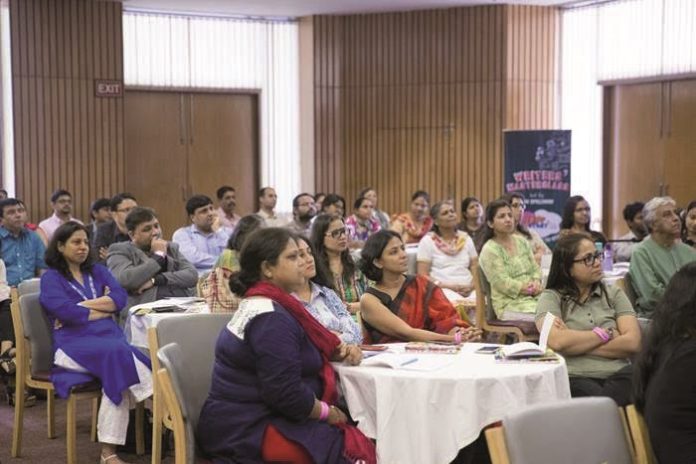
This year ‘Jumpstart Goes to School’ provided a 360 degree view of education in theory and in practice. The congress which took place on 2 and 3 August in New Delhi and on 6 August in Bengaluru was a confluence of many ideas with 17 speakers from four countries. The content creators and educationists came together and talked about the role of technology, design thinking, empathy and humour in children’s educational materials.
Speakers at Jumpstart 2016 included Ken Spillman, an Australian author, editor and critic; Florian Sochatzy, CEO of the Institute for Digital Learning, Munich, Germany; Preminda Langar, an innovative educator; Sabina Jain, an entrepreneur in the field of gamebased learning; Ratnesh Kumar Jha, managing director, South Asia, Cambridge University Press, India; Rohit Kumar, founder of Chapter Apps, a mobile publishing company; Amit Kaushik, an economist who has helped in the implementation of Sarva Shiksha Abhiyan; Harish Doraiswamy, vice president (direct delivery) schools vertical at Pearson India; Tara Kini, an independent consultant in education and music; Amrita Lalljee, an educator, performer and director; Orit Bergman, a writer and an illustrator of children’s books; Neeraj Jain, who has been on the Steering Committee of ‘Excellence in School Education,’ an initiative by IIT Delhi; Mukesh Kumar, a regional head with Agastya International Foundation; Vineet Gupta, a first generation entrepreneur and Sugat Jain, director – IT at RatnaSagar.
Major areas of discussion
The major areas of discussion of Jumpstart 2016 were the evolution of pedagogy which comprised questions about the teaching-learning transaction, sensory development and skill building and looking at how developers can create curricula to address these needs. An important point raised by Spillman was about how social learning and resilience can be taught to the children of today through stories.
The discussion on technology and the teaching-learning transaction stressed on how technology enhances education and enriches the learning process. This year’s Jumpstart planned to address whether technology can help the critical development of students and bring them to learn at the same pace. Another focus area was the future of innovation in education which aimed to look at the direction in which education is headed.
Masterclasses
Jumpstart 2016’s Digital Learning Design Masterclass dealt with the interaction between didactic concept and technical implementation and focussed on how the intention of the narration forms a design strategy that can bring forth innovation in the context of eLearning. The masterclass was led by Sochatzy whose main research interests are multimedia textbooks and the effects and requirements of digital learning.
Writers’ Masterclass talked about how storytelling was as old as humanity itself and has played a central role in structuring ways of seeing and imagining. The Illustrators’ Masterclass emphasized how pictures speak louder than words with a day-long session to understand the creative process that goes into writing picture books and how the power of these books can be used in classrooms to develop children into better readers and writers. Moreover, the workshop showed the techniques used and how the work of an illustrator impacts children, teachers and authors.
















